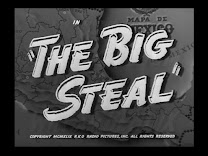How a Non-Assignment Clause Can Hinder Growth

This article is about the most costly mistake neophyte publishers make - a simple drafting mistake that can preclude the business's eventual sale.
A well-drafted publishing agreement allows for the sub-licensing of rights and the assignment of the contract itself. However, when starting out, some cash-strapped publishers rely on contracts found online or slavishly copy ones found in a book.
Aside from creating a unique brand, protecting your intellectual property, and insuring against media perils, investing in a well-drafted publishing agreement is the best way to add value to your company. Not only will it protect you against unnecessary legal risks, but it will allow you to reap what you have sown.
Lloyd J. Jassin is a publishing attorney and entertainment lawyer. He counsels clients on contracts, licensing, copyright, trademark, unfair competition, defamation, right of privacy, and general corporate law matters. His practice includes drafting and negotiating publishing and entertainment industry contracts, intellectual property due diligence, trademark prosecution, dispute resolution, and litigation. A Benjamin N. Cardozo Law School graduate, he is co-author of The Copyright Permission and Libel Handbook (John Wiley & Sons). He can be reached at 212-354-4442 or via email at Jassin@copylaw.com.
Related Blog Post
A Helpful Checklist for Book Contract Negotiations
Contact:
Law Offices of Lloyd J. Jassin
The Paramount Building
1501 Broadway, Floor 12
New York, NY 10036
212-354-4442 (tel.)
jassin@copylaw.com (email)
www.copylaw.org
Disclaimer - Terms of Use
By using our blog, you agree to be bound by the following Terms of Use.
Not Legal Advice. The information contained in this blog is intended as general advice. Because the law is not static, and one situation may differ from the next, we cannot assume responsibility for any actions based on the information published here. Be aware that the law may vary from state to state. Therefore, this blog cannot replace the advice of an experienced attorney. No attorney-client relationship is created by accessing or using this website. Contacting us by email does not create an attorney-client relationship. If you wish to establish a professional relationship, it must be done through a mutual written agreement. Please do not send us any confidential information until an attorney-client relationship has been established.
Limitation of Liability. We disclaim any liability, loss, damage, injury, or cost (including, without limitation, attorneys' fees, lost profits, or data) caused by the contents of this blog or website.
Links. This website contains links to third-party websites and other resources. These links are provided solely for your convenience and for educational purposes. They should not be construed as endorsements by the Law Offices of Lloyd J. Jassin.
Trademarks. Copylaw is a registered trademark of the Law Office of Lloyd J. Jassin.
(c) 2018-2022. Lloyd J. Jassin.












